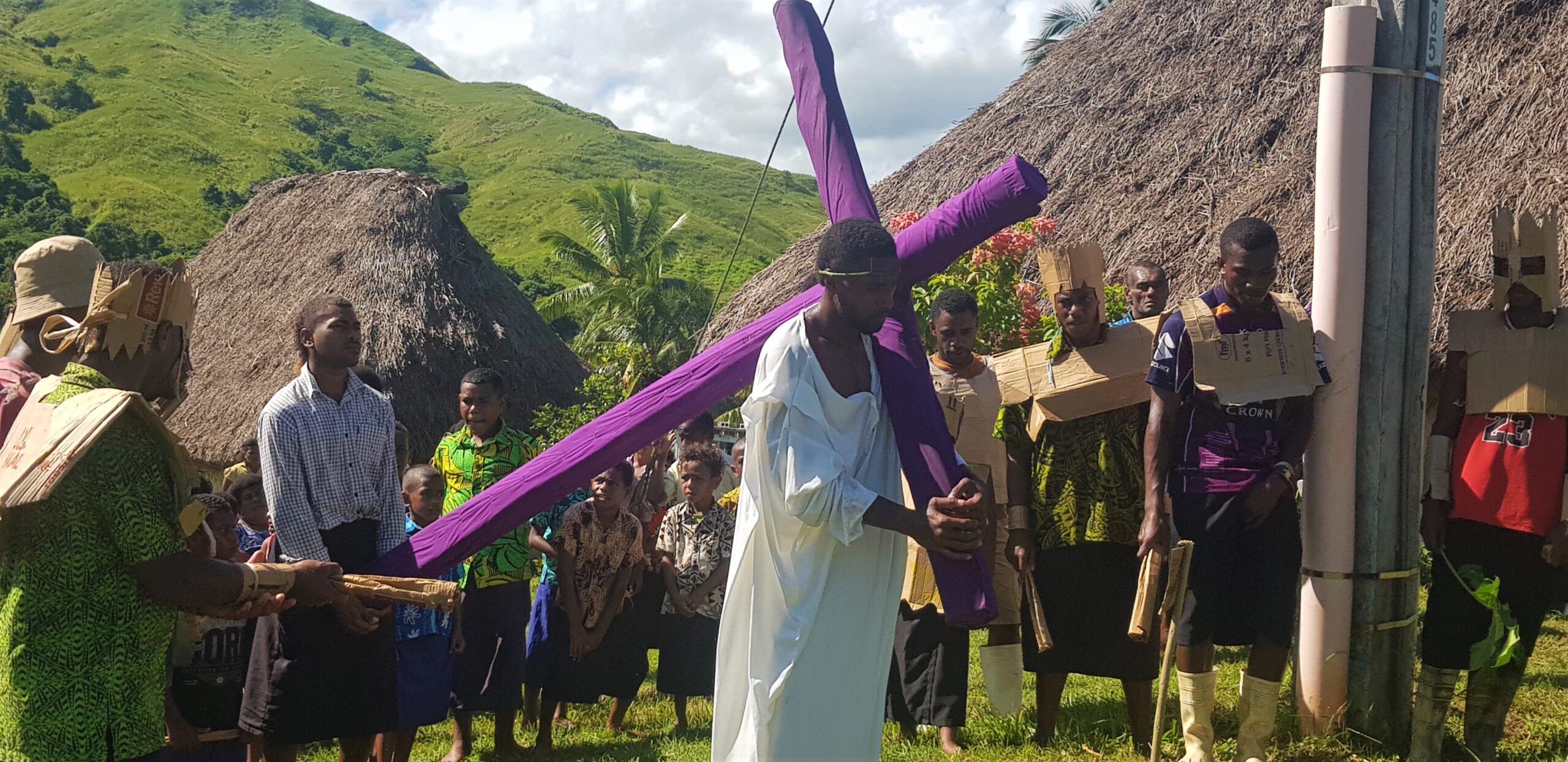As Easter approaches, Fr John McEvoy recalls his years spent in the Gold Mines Parish of Vatukoula which he has “always considered as the happiest years of my missionary life in Fiji”.
Back in 1981, as Easter approached, dark clouds of industrial strife also loomed on the horizon as a major strike of the miners was planned for after Easter. This could mean months of suffering for the miners and their families and even large-scale loss of jobs. Strikes and suffering were not new for the miners of Vatukoula. In a major strike five years previously, almost 1,000 miners lost their jobs because they belonged to the miners’ union which went on strike for better conditions.
The parish liturgical committee met and tried to correlate the present situation to the events of Easter based mainly on the theme of suffering. Could something be done to make the Easter liturgy and the imminent suffering of the people more meaningful? Could the entire Christian Community, not only Catholics be made more united and aware of what was happening during this season commemorating the Crucifixion and the Resurrection (suffering and the glory)?
The Liturgical Committee came up with a plan that on Good Friday instead of just Catholics making the Stations of the Cross in the church, that all Christians would come together and publicly enact the Stations of the Cross around the entire the gold mining area. The Methodist community led by their minister (talatala) joined the Catholics.
A large wooden cross was carried alternatively by members of the two communities. The Stations were performed at designated places, mainly at the villages, settlements, and pockets of population around the gold field. The entire journey of about 5 miles took about 4 hours to complete. The rosary, hymns and other prayers were recited along the way.
The Methodists sang their hymns with great expression and vigour. The actual stops for the stations themselves were both impressive and emotional as men and women and the young people from both churches poured out their sentiments as they recalled the particular suffering of Jesus at each station. The crowds surpassed all expectations, increasing in number along the way until more than 3,000 people were following the Cross, an impress display of unity and witness to the events of Good Friday.
The unity that was achieved that morning in Vatukoula proved to be very important in the events that were to come. The Christian community walked hand in hand witnessing to the suffering of Christ on that Good Friday morning. They did the same during the long strike that took place after Easter from April to September. Most of the Union Leaders were Catholic whereas most of the Union Members were Methodist. Those who had shared with those who had not.
Our St Vincent de Paul Society helped to feed some 50 families. Fear and suffering could be felt everywhere. Our prominent Catholics suffered most. The president of our parish council, who also happened to be the Mineworkers Union Leader, was disgracefully evicted from his home together with his wife and large family. Others were forced to leave the Union or lose their jobs. Of course, some did lose their jobs and were obliged to leave Vatukoula, but, in most cases, they found better employment with higher wages elsewhere.
The strike was eventually settled when the Fijian Government compelled Emperor Gold Mining Company to recognise the Mineworkers Union and to grant a 10.5% increase in their basic wage. To the present day there is still a lot of suffering and fear in Vatukoula but when the Christian aspect of suffering can be recognised there is also hope for the future. Our shared Easter Liturgy emphasised for the Christian Community: ‘No Cross. No Crown’.
Support Columban mission in places like Fiji by donatiing online here: https://columbans.ie/donate/

